Yellow archangel identification and control
Information about the noxious weed yellow archangel. Yellow archangel is also known by its Latin name, Lamiastrum galeobdolon.
About this weed
Yellow archangel is a non-regulated Class B noxious weed. This means control is not required in King County under the state noxious weed law. Yellow archangel is also on the Washington quarantine list.
Yellow archangel is known as Lamiastrum galeobdolon or Lamium galeobdolon. It is in the mint family. Other common names for this plant are silver archangel, dummy nettle, golden dead-nettle, weazel snout, silverfrost, yellow lamium, and Hermann’s Pride (also spelled Herman’s Pride).
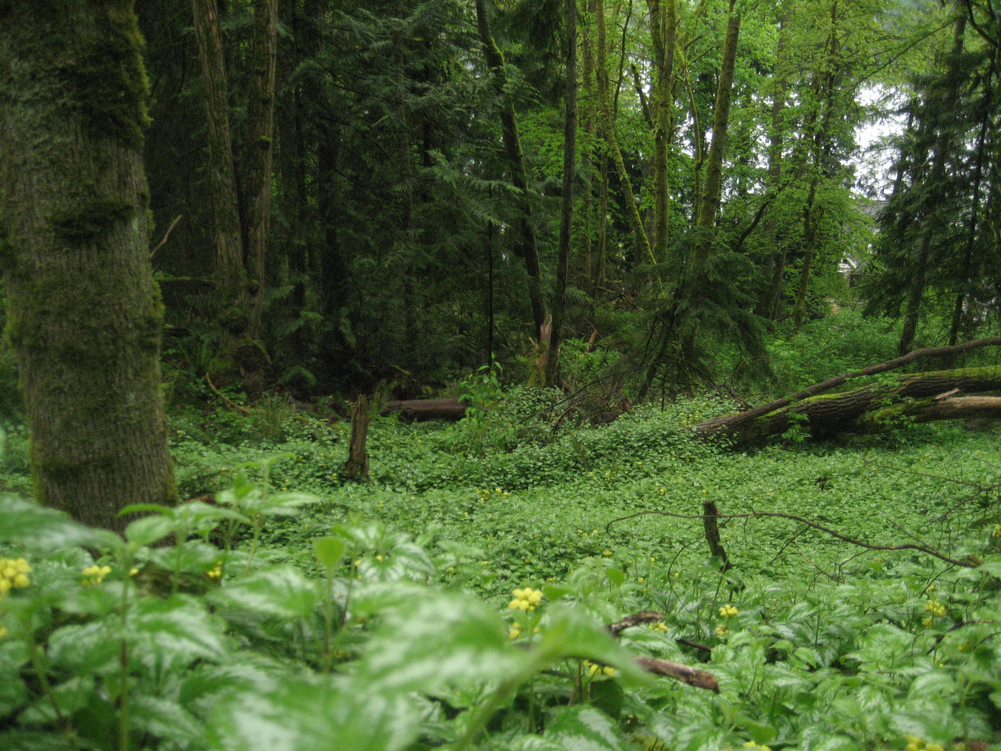
Why it's a problem
Yellow archangel forms dense mats of groundcover vegetation. It was used in hanging baskets and as a ground cover in gardens but has escaped widely and spread into natural areas.
This plant outcompetes native species and it does not provide enough food or cover for wildlife. It can overtake entire forest understories.
It gets increasingly difficult to control the longer it is left unmanaged.
Plant description
Yellow archangel is native to Europe. It is fast-growing, mint-like ground cover. This plant grows year-round and can thrive in full shade to full sun.
Its leaves are opposite (connect to the stem in pairs) of one another along the stem. Leaf shape looks like wings, hence the name. They are aromatic when crushed. Leaves are oval shaped, growing smaller towards the tips. They are toothed and typically variegated (silvery-gray markings). Young plants and seedlings may not have the distinct silvery markings.
Stems are square and grow along the ground. They can appear reddish at times and are covered in fine hairs. They can freely branch and root at leaf nodes (solid sections along stem that resemble knees) along the stem, forming dense growth.
Flowers appear early from April to June. Flowers are small, yellow, and tubular. They grow on short stalks that rise above the leaves.
Yellow archangel reproduces by seed, by plant fragments, and by creeping stems that grow outward from the parent plant.
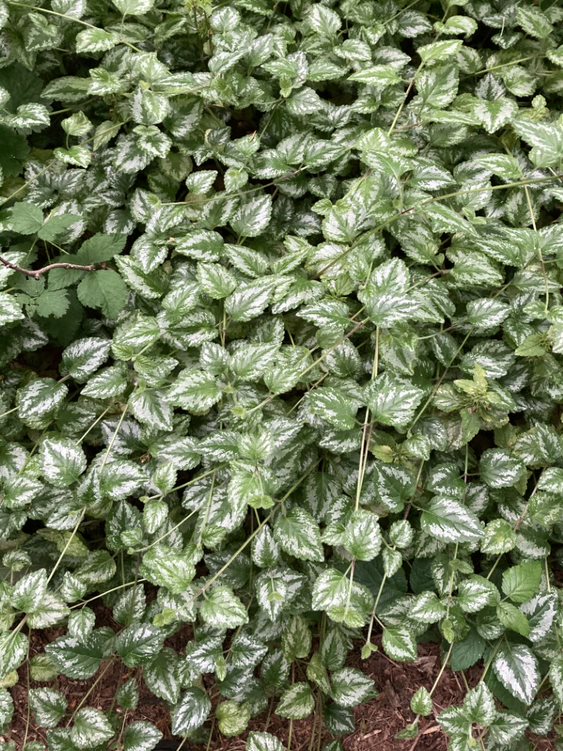

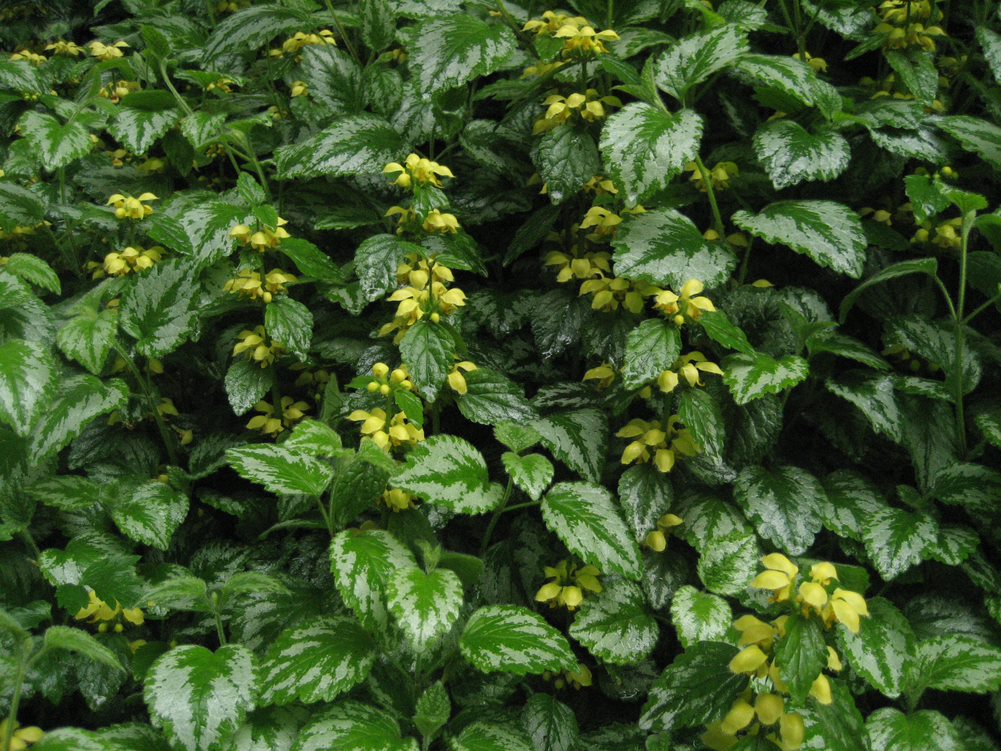
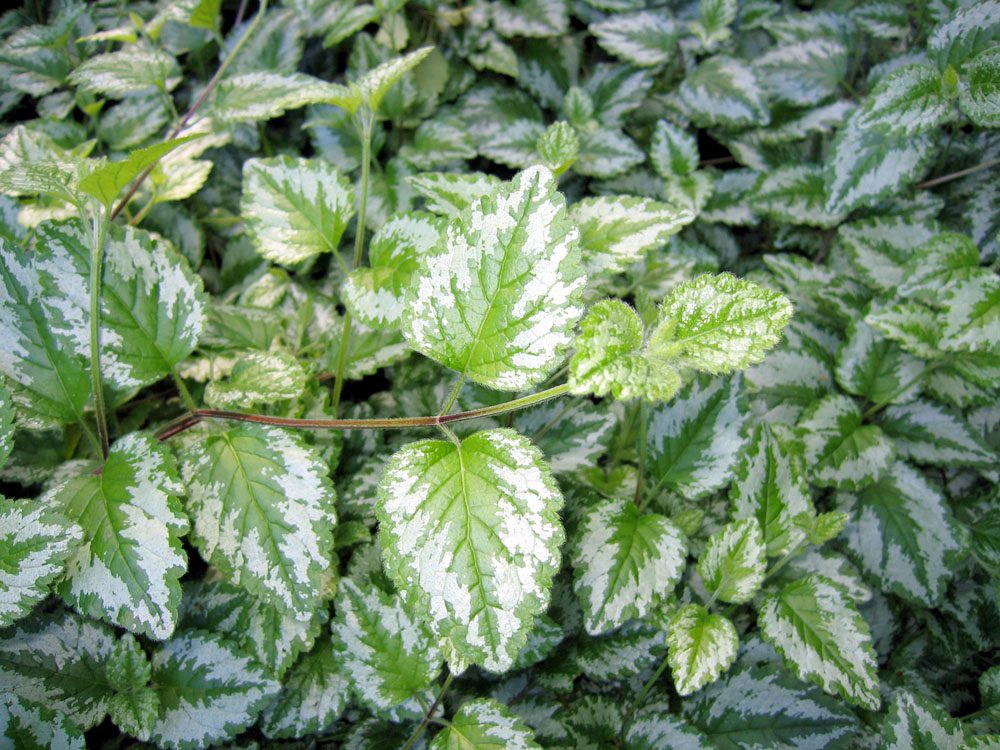
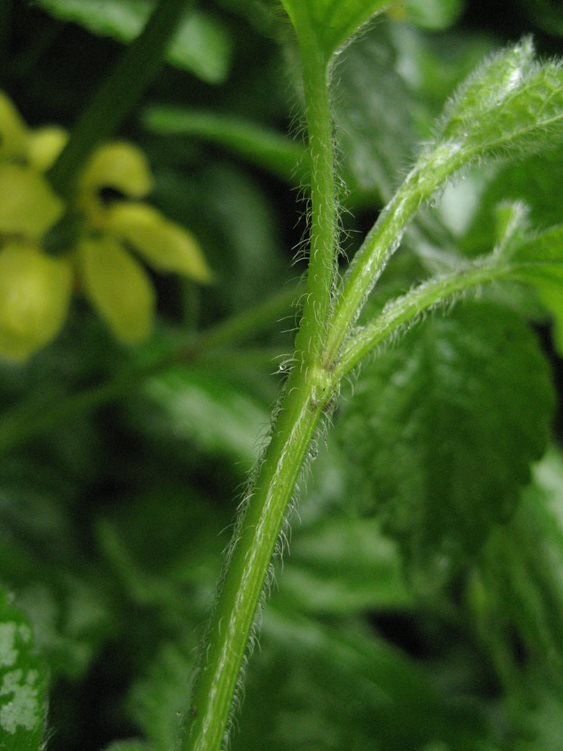
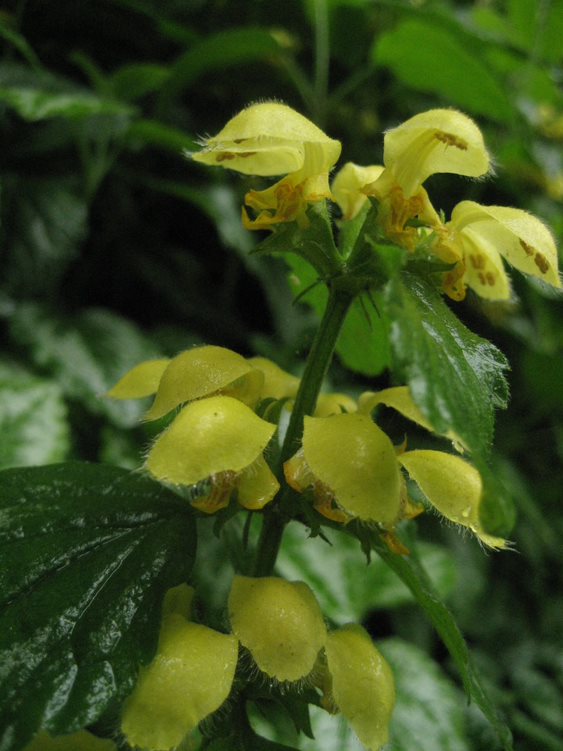
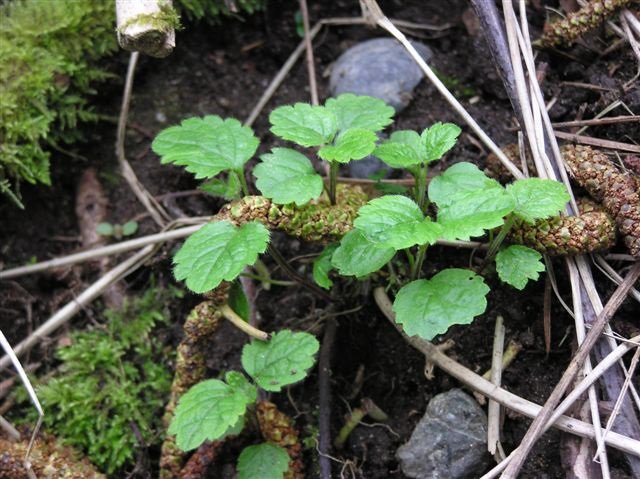
Be aware of look-alike plants
Yellow archangel is often confused with
Aegopodium podagraria (bishop's weed)
When in doubt, take photos and report them on iNaturalist.
What to do if you find it
Control of yellow archangel is not required in King County, but we highly recommend it. Because of its impact, many public agencies are working to remove yellow archangel from natural areas. We are not generally tracking infestations, but we can share location information with the public agency if you report it to us.
Control methods
We recommend using a combination of methods to control noxious weeds. In areas with few weeds, it is important to act quickly before they become harder to control. Make a long-term plan as it often takes several years to get rid of most weeds. Start in the least infested areas first and then move into more heavily infested areas.
Manual control
Hand pulling is often not very effective. It also takes a lot of time. Sometimes it can work on small patches or where the soil is loose. But in most cases, the delicate roots break and plants re-grow. New plants can grow from any roots or fragments left in the soil. This means that you will need to repeat the process many times a year over several years to be effective.
Once removed, be careful where you put the plant material. Yellow archangel readily grows from stem fragments and is often found spreading from yard waste piles or dump sites.
Cultural control
Sheet mulching or geotextile fabric may be effective. Cover the whole patch with a layer of woodchips 3 to 4 inches deep. Even better if you can layer woodchips with cardboard or geotextile fabric. Watch edges and gaps closely for regrowth.
Chemical control
Stay safe when using herbicide:
- Always read the label before use.
- Wear a long-sleeved shirt, long pants, shoes, and eye protection.
- Follow state and local regulations.
Cutting alone is not effective. Cutting and applying herbicide to regrowth is more effective.
Control with herbicide is more effective, although still challenging. Choose a product that is appropriate for the site.
If the area is wet or near water, you will need a permit from the Department of Ecology and a pesticide applicators license. Feel free to contact us for permitting information or information on hiring a licensed aquatic weed contractor.
You can spray yellow archangel whenever it is actively growing. Follow up on any regrowth either later in the same year or the following year.
Chemicals that work reasonably well include glyphosate or imazapyr. For better results, use a combination of glyphosate and triclopyr, glyphosate and imazapyr, or glyphosate and aminopyralid. Usually, you will need to do this for several years to get rid of the plants entirely.
See the PNW Pest Management Handbook for the most up to date and specific method for chemical control of yellow archangel.
Disposal instructions
Dispose of all plant parts in a sealed bag in the garbage or landfill. Do not compost any plant parts as it can reproduce from fragments.
Noxious Weed Disposal - Washington State Noxious Weed Control Board
Learn more about yellow archangel
Read yellow archangel fact sheet (314KB)
This fact sheet is also available in these languages:

 Translate
Translate